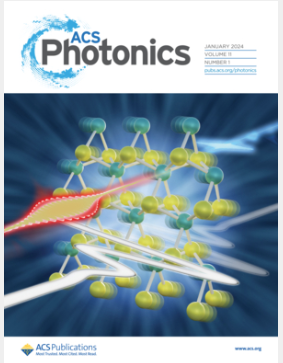Grating-Assisted On-Chip Optical Dispersive Delay Lines with Suppressed Ripples Based on Disorder-Induced Self-Compensation Effect
IF 6.7
1区 物理与天体物理
Q1 MATERIALS SCIENCE, MULTIDISCIPLINARY
引用次数: 0
Abstract
The grating-assisted optical dispersive delay line has proven to be one of the most effective approaches to providing large dispersions within broad bandwidths. However, when applying conventional apodization technology to mitigating the group delay ripples induced by gratings, major issues arise, including insufficient resolution and random errors in the manufacturing process. Due to the susceptibility of practical responses of apodized Bragg gratings to fabrication variations, a novel solution with large manufacturing tolerance has been proposed and demonstrated by cascading several short grating-assisted contra-directional couplers (GA-CDCs). Thanks to the unique disorder-induced self-compensation effect, this cascade configuration can reliably suppress group delay ripples without apodization technology requiring high-precision manufacture. To predict the performance of cascaded GA-CDCs, a size disorder model has been introduced for the first time, assuming that waveguide width deviation follows a Gaussian distribution. Multiple samples with consistent designs were fabricated and characterized to confirm the robustness of the proposed scheme. Additionally, a 20-stage cascade GA-CDC is demonstrated with a large dispersion, achieving −52.11 ps/nm. Further improvements have been made by adjusting the spacing between adjacent contra-directional couplers to decrease spectral notch depths and side-lobe magnitudes. Moreover, an autonomous compensation system for group delay fluctuations shows great promise through independent thermal tuning of each GA-CDC combined with an automatic control system based on various optimization algorithms.

基于无序自补偿效应的光栅辅助片上光色散延迟线与抑制波纹
光栅辅助光色散延迟线已被证明是在宽带宽内提供大色散的最有效方法之一。然而,在应用传统的光栅化技术来减轻光栅引起的群延迟波纹时,会出现一些重大问题,包括分辨率不足和制造过程中的随机误差。由于光栅布拉格光栅的实际响应易受制造变化的影响,因此提出了一种具有较大制造容差的新型解决方案,并通过级联多个短光栅辅助反向耦合器(GA-CDC)进行了演示。得益于独特的无序诱导自补偿效应,这种级联配置可以可靠地抑制群延迟纹波,而无需采用需要高精度制造的光栅技术。为了预测级联 GA-CDC 的性能,我们首次引入了尺寸无序模型,假设波导宽度偏差服从高斯分布。我们制作了多个设计一致的样品,并对其进行了表征,以证实所提方案的稳健性。此外,还演示了 20 级级联 GA-CDC,其色散很大,达到了 -52.11 ps/nm。通过调整相邻反向耦合器之间的间距,降低了光谱陷波深度和侧叶幅度,从而实现了进一步的改进。此外,通过对每个 GA-CDC 进行独立的热调整,并结合基于各种优化算法的自动控制系统,群延迟波动的自主补偿系统大有可为。
本文章由计算机程序翻译,如有差异,请以英文原文为准。
求助全文
约1分钟内获得全文
求助全文
来源期刊

ACS Photonics
NANOSCIENCE & NANOTECHNOLOGY-MATERIALS SCIENCE, MULTIDISCIPLINARY
CiteScore
11.90
自引率
5.70%
发文量
438
审稿时长
2.3 months
期刊介绍:
Published as soon as accepted and summarized in monthly issues, ACS Photonics will publish Research Articles, Letters, Perspectives, and Reviews, to encompass the full scope of published research in this field.
 求助内容:
求助内容: 应助结果提醒方式:
应助结果提醒方式:


